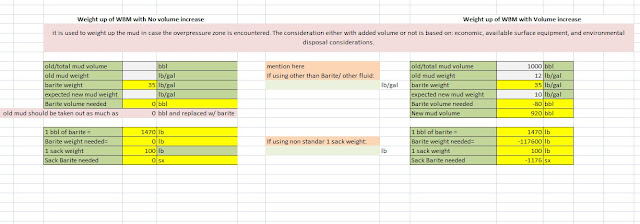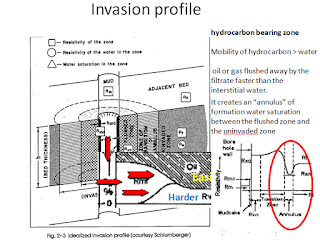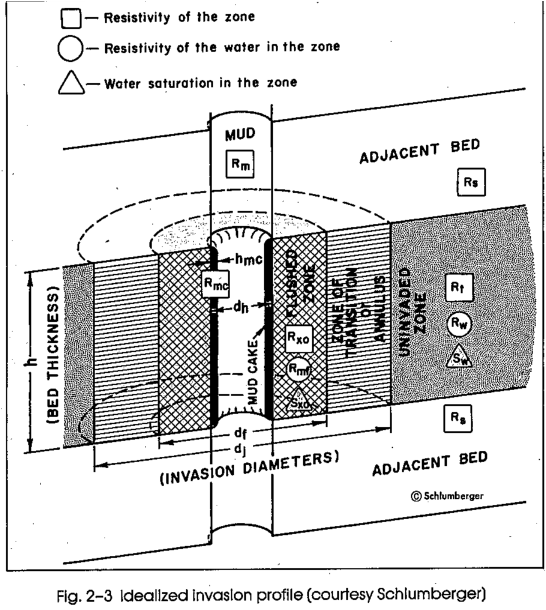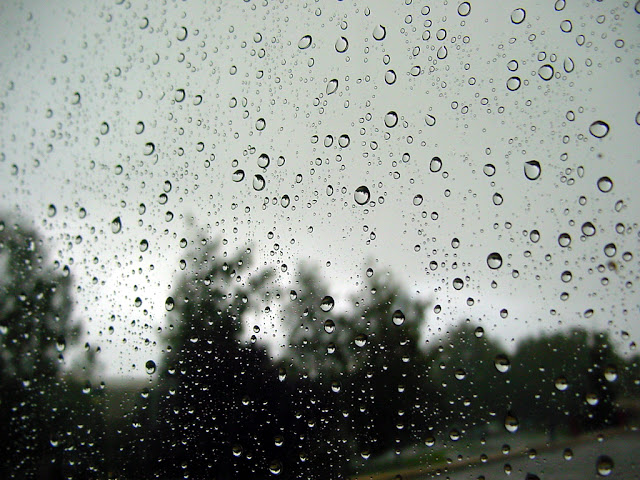Mud Engineering Simple Program, FREE!!
Before talking about mud engineering, we should understand first the importance of the mud itself in drilling a well. These functions are remove cuttings from well, suspend and release cuttings, control formation pressures, seal permeable formations, maintain wellbore stability, minimizing formation damage, cool, lubricate, and support the bit and drilling assembly, transmit hydraulic energy to tools and bit, ensure adequate formation evaluation, control corrosion (in acceptable level), facilitate cementing and completion, and minimize impact on environment
One of the most significant uses of mud is based on its weight
(density). This is mainly related to the function of controlling formation pressure and removing cutting from the well. The mud weight should be adjusted in time and precisely to ensure
the mud does its functions. When the mud weight exceeds the fracture pressure (the
maximum pressure the formation can accept before it breaks), the formation may
fracture and lost circulation may happen, thus reducing the pressure in the
well and creating kick. If the mud goes
into hydrocarbon bearing zone, it will also impede the formation from producing
oil.
In contrary, if the mud weight is too low, the hydrostatic
pressure in the well will be less than the formation pressure. The fluid in the
formation then may flow into the wellbore and delivered to the surface. This is
referred to as a formation kick, and if the invading fluid reaches the surface abruptly,
the nightmare, “blowout”, comes. These fluids are easily burnt hydrocarbons,
which are in the surface, with oxygen and friction, will create explosions.
Other aspect that should be considered is about the solid content in the mud. Mostly it will affect the functions to suspend the cutting, cool, and lubricate bit. Solid content should be maintained to improve the mud functions.
These functions should be adjusted for every changes of lithology and formation types, thus every changes should also be done quickly and accurately in the field and should not disturb the drilling works. Sometimes people drill through overpressure formation and the mud density should be increased, while sometimes people go through brittle formation and the solid content will be increased. These problems should be handled quickly before it become massive problem.
Here, i upload an example of mud engineering program, not too complicated, but might explain how things work in the field. Let's take an example!
This is the example when people need to weight up the mud since they encounter the overpressure area. The choice, whether with volume increase or not, depends on regulation, environmental and capacity of the facilities. Let's assume that the facilities has limited capacities, perhaps since the field in the middle of city/ village, or because we need to maintain the solid percentage in the mud.
The mud is 500 bbl now with density 9.5 lb/gal, and need to be increased to 10 lb/gal. The result will be
Remember to jet out old mud 9.8 bbl first before adding Barite to ensure the volume still the same.
If the same fluid's density must be reduced, then
Those are some example of this program. you may download from the link below. It is a ubject of revision so please give some advice in the comment section, would you? Thank you for visiting my blog. Have a nice day
Kindly write message for the program in this post
Do you love this post? Thank you! I feel appreciated. This post is under the category of Petroleum Engineering, you may love to see other similar posts HERE
Do you love this post? Thank you! I feel appreciated. This post is under the category of Petroleum Engineering, you may love to see other similar posts HERE






Comments
Post a Comment